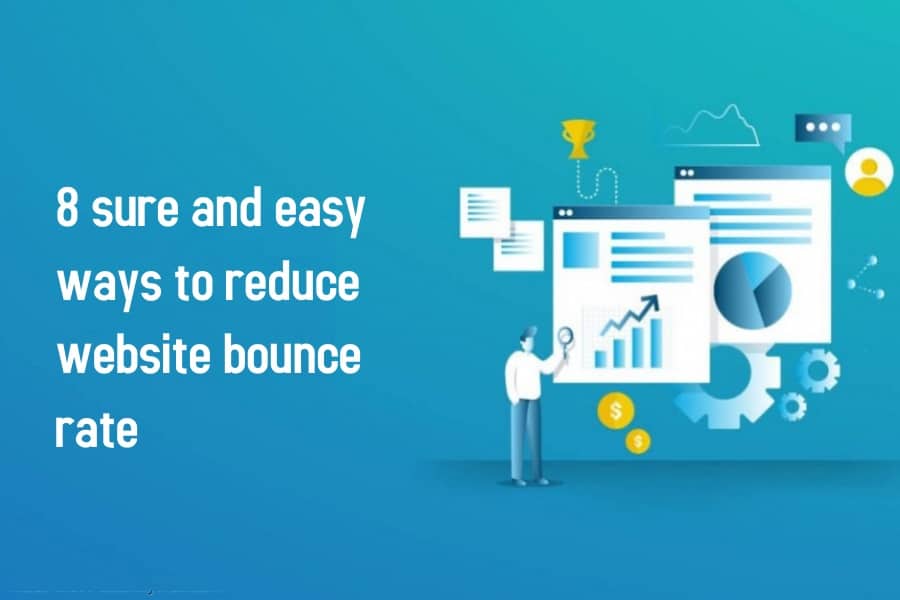Bounce rates, its allied metrics are a good yardstick to measure the general appeal of a webpage. This comes down to stickiness or the factor which keeps page visitors on-site and helps them ‘stick’ around.
What exactly are the bounce rates?
Bounce rates are essentially numeric, a percentage that tells you how many people came to your webpage and left without moving to other pages. This, when combined with time spent on a page, will give you a ballpark idea of how engaging and effective your website is, and that when people spend more time it will automatically translate into revenue.
Why should you care about bounce rate?
Bounce rates, apart from being a measure of your website’s stickiness, also tells you whether your content is effective in reaching its’ target audience.
But experts from a leading E commerce website development company in Hyderabad opine that bounce rates on its’ own as a metric could be tricky. It should be used in combination with others to understand where the scope for improvement in your website lies.
With a few pointers here and there, your webpage will be good to go, and as sticky as honey!
-
Flawless UI/UX
Aesthetics are a lot when it comes to first impressions. A beautiful website would create a favorable impression on the user. Design that appeals, and a user experience that they cannot resist – is a killer combination that nothing can beat. Bad Ui/UX on the other hand will convince users to leave.
-
Content is king
As important as the aesthetic, design, and experience of the web page is content. Images, articles, and content on the page should be crisp, relevant, and informative. Users will judge content on the landing page and decide if they want to navigate or quit. This is crucial when it comes to reducing bounce rates.
-
Ensure your webpage is not too heavy
The first time someone visits your webpage, they come with attention spans so low that they can snap it out if it loads slow. Make sure your pages load fast on mobile, tablets, and desktop versions. If a page takes more than two seconds to load, as a thumb rule people are already thinking of leaving. Not just from a bounce rate point of view, this is also an important aspect of Google’s mobile rankings.
-
Mobile-friendly pages
Statistics show that most browsing happens on the mobile, after which consumers may return to the webpage through a desktop version. In such cases, not having a webpage optimized for mobile is a serious concern and may drive bounce rates through the roof.
-
Drive better calls to action
Call to action is a clear prompt to the customer, nudging him to take some action. This could be a CTA button or a link. For effective CTA you must use the right wording (buttons that say checkout, menu), color scheme (colors must be relevant to the product/service/brand), placement (the placement of CTA buttons should be at the right place to attract user attention), device adaptability (CTA buttons must not be device agnostic)
-
Say no to click-bait
Clickbait is this sensationalized headline that compels users to click on it and take them to other web pages. They have been largely gaining a negative reputation these days with many of them leading to spurious sites and pages synonymous with phishing attacks.
That said, your content should have a really engaging title, but more importantly relevant to your page, that can help bait the customer and take them forward to your webpage.
-
Capitalize on internal links
Internal links can be a great way to improve SEO, and they can also help make users spend time on your webpage. If it is a retail website, similar items, or showing other relevant content and linking pages together internally would mean the user spends more time on the page, thereby reducing bounce rates.
-
External linking
This is quite tricky. External links, backlinks are all great ways to improve SEO and generate traffic. But when not done properly, an external link in the wrong place could drive users away. Putting an external link would send them away from your webpage increasing bounce rates.
Bounce rates are crucial. But a low bounce rate is not always desirable, say experts from top SEO companies in Hyderabad. A lot of it depends on the product and service offering. You love your website, and an optimal bounce rate means everyone else loves too!




